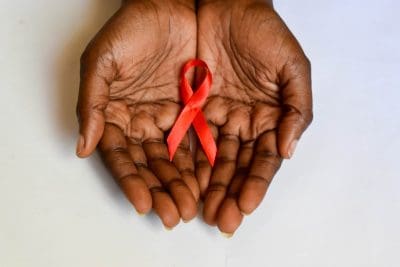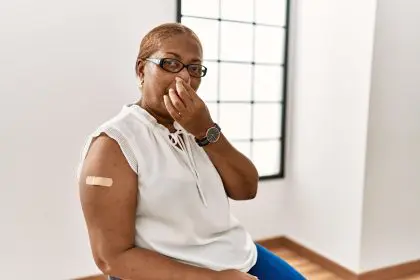Sexually transmitted disease rates have reached alarming levels across the United States, with five infections in particular showing significant increases over the past decade. This troubling public health trend has experts concerned as prevention efforts struggle to stem the tide of new cases. Behind these rising numbers lie complex social, economic, and behavioral factors that require immediate attention to protect public health in 2025 and beyond.
Syphilis makes an unwelcome comeback
Once nearly eliminated in the United States, syphilis has staged a dramatic resurgence, with rates increasing by approximately 68% since 2018. The bacterial infection, which can cause serious neurological and cardiovascular complications if left untreated, has especially impacted men who have sex with men, though heterosexual transmission continues rising at an alarming pace.
The most disturbing aspect of this trend is the 291% increase in congenital syphilis cases over the past five years. This form of the disease passes from mother to baby during pregnancy, potentially resulting in stillbirth, infant death, or severe health problems for surviving babies. Public health departments across the country report approximately 3,700 congenital cases annually, the highest number recorded since 1991.
This increase stems from several factors, including decreased condom usage, insufficient prenatal care access, reduced public health funding, and limited testing availability in rural communities. Many pregnant individuals remain unaware of their infection status until complications arise, highlighting critical gaps in reproductive healthcare access and education.
Gonorrhea develops treatment resistance
Gonorrhea rates have climbed steadily since 2018, with approximately 677,000 new infections reported annually according to the Centers for Disease Control and Prevention. More concerning than the numerical increase is the emergence of antibiotic-resistant strains, which significantly complicate treatment efforts.
The bacterial infection, which can affect the genitals, rectum, and throat, often presents with minimal or no symptoms, allowing unknowing carriers to spread the disease. Left untreated, gonorrhea can cause pelvic inflammatory disease, infertility, and increased vulnerability to HIV.
Drug-resistant gonorrhea has developed through inappropriate antibiotic use, incomplete treatment courses, and the bacteria’s remarkable ability to evolve defenses against medications. Current recommended treatments involve dual-therapy approaches, but health officials worry about diminishing effective options as resistance continues developing.
Chlamydia remains the most reported bacterial infection
Chlamydia continues its reign as America’s most commonly reported bacterial infection, with approximately 1.6 million cases documented annually. The infection primarily affects young people aged 15-24, with women disproportionately diagnosed due to more regular screening during gynecological exams.
The rising rates reflect both increased testing and actual transmission growth. Chlamydia often produces no noticeable symptoms, allowing the infection to spread silently while potentially causing serious reproductive harm, including pelvic inflammatory disease and infertility.
The growth in chlamydia cases correlates with declining condom usage among young adults, reduced comprehensive sex education in schools, and limited access to preventive healthcare services. Many young people remain unaware of their infection status, creating chains of transmission that expand before detection occurs.
HIV affects new demographic groups
While overall HIV rates have stabilized in many regions, certain populations experience increasing infection rates, particularly in southern states and among specific demographic groups. Approximately 34,000 new HIV infections occur annually, with Black and Latino men who have sex with men facing disproportionate risk.
Recent years have witnessed concerning increases among heterosexual women in southern states and among adults over 50 nationwide. These shifting demographics challenge traditional prevention messaging and highlight gaps in targeted intervention strategies.
Contributing factors include reduced condom usage due to decreased fear of HIV as a fatal disease, limited access to pre-exposure prophylaxis (PrEP) medications in certain communities, persistent stigma preventing testing, substance use disorders complicating risk assessment, and inconsistent sex education across regions. The geographic concentration of new infections in areas with limited healthcare access exacerbates these challenges.
Mycoplasma genitalium emerges as a significant concern
Though less familiar to the general public, mycoplasma genitalium (MG) has emerged as a serious STD threat, affecting an estimated 2-3% of the general population. This bacterial infection can cause urethritis in men and cervicitis, pelvic inflammatory disease, and potential fertility issues in women.
MG infections have increased steadily since improved testing became available around 2018. The infection’s capability to develop antibiotic resistance mirrors gonorrhea’s concerning pattern, with some strains already showing resistance to multiple treatment options.
The rising rates stem from limited awareness among both patients and healthcare providers, inadequate testing availability, mistaken diagnoses as other conditions, and the infection’s ability to persist despite treatment. Many healthcare facilities still lack routine testing capabilities for this emerging pathogen, allowing infections to spread undetected.
Why STD rates continue climbing
Several interconnected factors drive the increases across these five infections. Understanding these root causes helps explain why traditional prevention approaches have proven insufficient.
Reduced public health funding hampers prevention
Public health departments across the country have experienced significant budget reductions over the past decade, limiting their ability to conduct contact tracing, provide free testing services, and implement comprehensive prevention programs. Many STD clinics have reduced hours or closed entirely, removing crucial access points for vulnerable populations.
The COVID-19 pandemic further strained these already limited resources, redirecting staff and funding away from STD prevention during critical periods. This resource diversion created screening gaps that allowed infections to spread undetected, particularly during pandemic lockdowns when sexual health services were classified as non-essential in many locations.
As public health departments struggle to rebuild capacity in 2025, they face larger case numbers with fewer resources, creating a challenging cycle that allows infection rates to continue rising despite renewed attention.
Dating app culture changes sexual behavior patterns
The normalization of dating apps has fundamentally altered how people meet potential partners, facilitating more frequent casual encounters and expanding sexual networks. While these platforms offer convenience, they typically provide limited opportunities for discussing sexual health history before meeting in person.
Research indicates that dating app users report higher numbers of sexual partners and lower rates of consistent condom usage compared to those who meet partners through traditional social connections. The ease of finding new partners can create a sense of disconnection from potential health consequences, particularly among younger users.
Several dating platforms have attempted to incorporate sexual health information and testing reminders, but these efforts remain inconsistent across the industry. The rapid partner turnover enabled by these technologies significantly complicates traditional contact tracing efforts when infections occur.
Comprehensive sex education declines
Many school districts have moved away from evidence-based comprehensive sex education in favor of abstinence-focused or limited information approaches. This educational shift has left many young people without essential knowledge regarding STD prevention, testing importance, and early symptom recognition.
Studies consistently demonstrate that young adults who receive comprehensive sex education start sexual activity later and engage in safer practices than those who receive abstinence-only instruction. The geographic areas with the highest STD rates frequently correlate with regions offering minimal sexual health education in schools.
This knowledge gap extends beyond adolescence, with many adults lacking updated information about changing STD risks and prevention strategies. Public health messaging has failed to adequately address evolving risk factors and treatment resistance issues, leaving many incorrectly assuming that all STDs remain easily curable.
Healthcare access barriers persist
Despite healthcare coverage expansions, significant portions of the population face substantial barriers to accessing sexual health services. Approximately 27 million Americans remain uninsured, while millions more have high-deductible plans that discourage preventive care and testing.
Geographic disparities further complicate access, with rural areas and certain urban neighborhoods experiencing provider shortages and limited testing facilities. Transportation challenges, inconvenient clinic hours, and privacy concerns prevent many potentially infected individuals from seeking timely care.
Cultural and language barriers additionally impact healthcare utilization among immigrant populations and non-English speakers. Many avoid testing due to perceived stigma from healthcare providers or cultural taboos surrounding sexual health discussions.
Condom usage continues declining
Condom usage has steadily decreased across nearly all demographic groups over the past decade. This decline reflects several factors, including reduced HIV fear, increased reliance on hormonal contraception focusing exclusively on pregnancy prevention, and limited negotiation skills among sexual partners.
The decreased emphasis on condoms corresponds directly with rising infection rates, particularly for bacterial STDs like chlamydia and gonorrhea. Many young adults perceive these infections as minor inconveniences rather than serious health threats, reducing motivation for preventive measures.
Prevention messaging has struggled to effectively communicate the continued importance of barrier methods in an era of effective HIV treatments and contraception options. Public health campaigns have not successfully countered the widespread perception that most STDs represent minor, easily treatable conditions.
How communities can reverse these trends
Addressing the complex factors driving STD increases requires coordinated efforts across multiple sectors. Effective strategies must combine increased resources, policy changes, educational improvements, and technological innovations.
Restore and expand public health funding
Reversing decades of public health funding cuts represents the most direct approach to improving STD prevention and treatment. Increased resources would allow for expanded testing hours, mobile clinic operations in underserved areas, and comprehensive contact tracing when infections occur.
Dedicated funding streams for STD prevention would ensure these critical services remain operational even during other public health emergencies. Additional investment in surveillance systems would improve data collection and analysis, allowing for more targeted interventions in highly affected communities.
Several cities that have prioritized sexual health funding have demonstrated that targeted investments produce significant results. For example, programs offering free home testing kits have identified infections in populations that rarely interact with traditional healthcare systems.
Modernize sexual health education
Implementing comprehensive, medically accurate sexual health education in schools would provide young people with essential prevention knowledge before they become sexually active. Updated curricula should include information about all prevention methods, testing recommendations, and the importance of communication with partners.
Educational efforts must extend beyond adolescence through adult-focused awareness campaigns addressing misconceptions about STD risks and treatment realities. These programs should utilize social media and other digital platforms to reach diverse audiences with accurate, accessible information.
Healthcare providers also require ongoing education about emerging pathogens like mycoplasma genitalium and current treatment guidelines. Many primary care physicians receive minimal training on sexual health assessment and may miss opportunities to offer appropriate testing and treatment.
Expand testing options and accessibility
Increasing testing availability through multiple channels would help identify infections before transmission occurs. Options should include traditional clinic-based testing, express testing sites with minimal wait times, pharmacy-based services, and home testing kits for those who prefer privacy.
Removing financial barriers through insurance coverage requirements for STD screening without copays would significantly increase utilization rates. Additionally, routine opt-out testing during normal healthcare visits could normalize the process and reduce associated stigma.
Innovative approaches like internet-based partner notification systems allow anonymous alerting of potential exposures, increasing testing uptake among those who might otherwise remain unaware of their risk. These technological solutions complement traditional contact tracing methods while respecting privacy concerns.
Address healthcare disparities
Targeted interventions for communities experiencing disproportionate infection rates must address underlying social determinants of health. Programs offering transportation assistance, extended clinic hours, cultural competency training for providers, and multilingual services can significantly improve healthcare utilization.
Ensuring affordable treatment access prevents partially treated infections from developing resistance or continuing transmission chains. Complete treatment courses must remain accessible regardless of insurance status or ability to pay.
Community-based organizations often establish trust in underserved populations more effectively than traditional healthcare institutions. Partnering with these trusted voices increases intervention effectiveness and helps overcome historical mistrust of medical systems.
Normalize sexual health conversations
Reducing stigma surrounding STDs requires normalized, matter-of-fact discussions about sexual health in healthcare settings, educational environments, and mainstream media. Open conversations help people recognize risk factors and seek appropriate testing without shame.
Healthcare providers should routinely initiate sexual health discussions with all patients, not just those perceived as high-risk. These conversations provide opportunities to address misconceptions, recommend appropriate screenings, and offer preventive measures like vaccines and PrEP when indicated.
Public awareness campaigns featuring diverse representation help demonstrate that STDs affect all demographic groups, reducing the tendency to view these infections as problems affecting only certain populations. Normalizing testing as routine healthcare rather than indicating risky behavior increases willingness to participate in screening programs.
Moving toward a healthier future
The rising rates of these five STDs represent a significant public health challenge, but evidence-based approaches can reverse these concerning trends. Successful interventions require sustained commitment from policymakers, healthcare systems, educational institutions, and communities working together toward comprehensive solutions.
Addressing the complex social, economic, and behavioral factors driving infection increases demands approaches that extend beyond simplistic messaging or temporary programs. Real progress requires acknowledging how changing social norms, technological developments, and healthcare access issues interconnect to influence sexual health outcomes.
With appropriate resources, evidence-based interventions, and stigma reduction efforts, communities across America can turn the tide against rising infection rates. The path forward involves not just treating existing cases but building systems that support long-term sexual health through education, access, and normalized prevention practices.
By confronting these challenges directly and honestly, public health officials can work toward a future where these preventable infections no longer threaten the health and wellbeing of millions of Americans each year.








